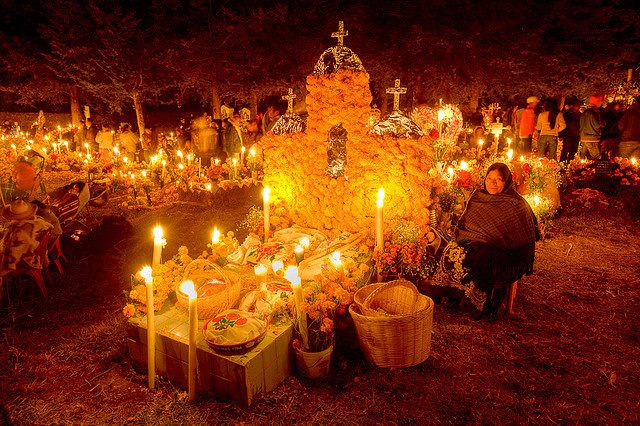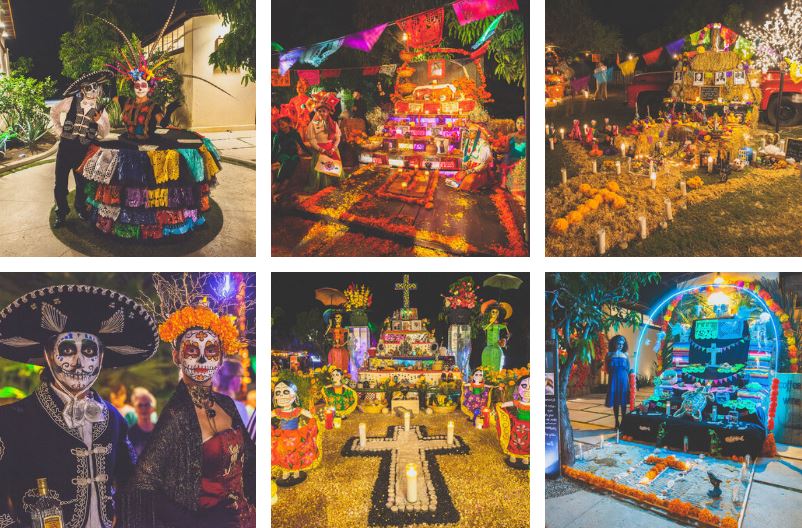
Día de Los Muertos, known as Day of the Dead in the U.S., regardless of its timing and its supernatural inclinations, is not to be taken as child’s play. The two-day festival that begins on the eve of October 31 with Noche de Brujas (Night of the Witches), that commemorates dead children on November 1 with the Day of the Innocents, and that culminates on the 2nd with the colorful pageantry of the Day of the Dead, does indeed appear similar to Halloween. Yes, there are sugared skulls and painted faces, and, yes, there are lively celebrations, including dance, drink, and food, but Día de Los Muertos is a serious cultural celebration meant to honor the dead and to recognize the ongoing cycle of life and death.
Day of the Dead is a tradition that has roots stretching back over 3,000 years when indigenous groups, mainly the Aztecs, celebrated the Queen of the underworld, Mictecacihuatl, and left offerings for the departed, who they believed undertook a difficult journey over several years through nine levels of the underworld to reach their final resting place. Later, the Spanish introduced the celebration of All Saints and All Souls Days on the 1st and 2nd of November when practitioners would decorate graves with candles, wine, bread, and flowers to welcome the return of the departed souls of the dead. The two traditions combine to make the impressive celebrations of today’s Día de Los Muertos.
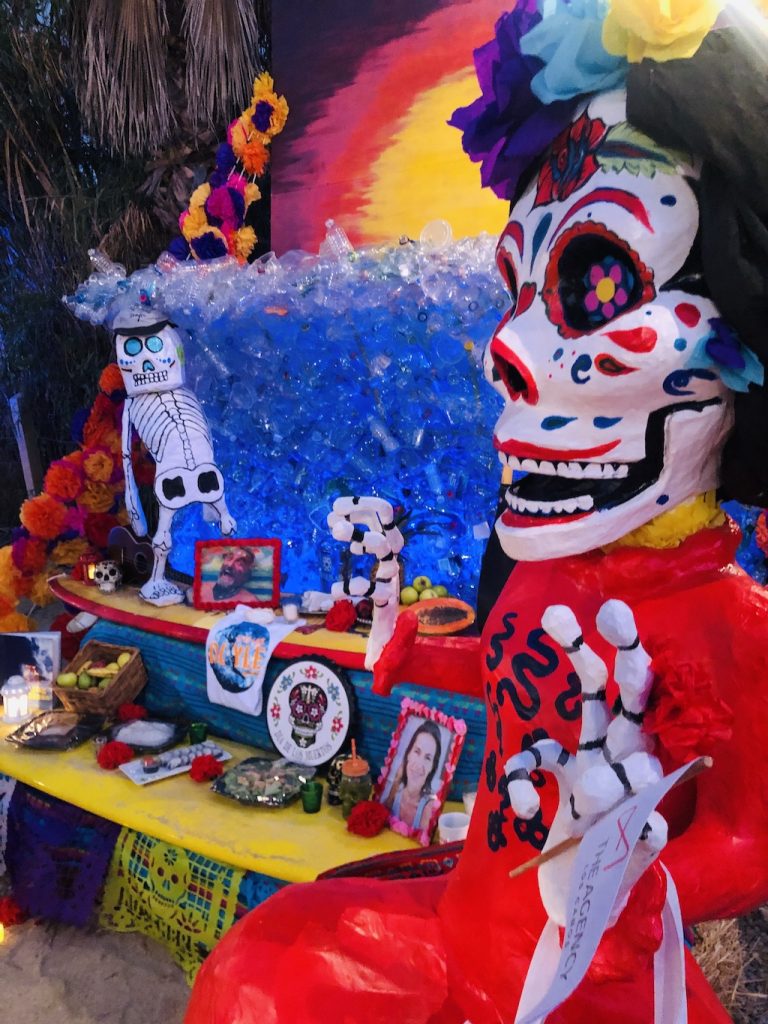
All over Mexico, visitors can see the traditions of Day of the Dead mingled with local variations from the largescale to the truly intimate. Here are a few of the more notable places to visit, should you want to experience firsthand this moving and festive holiday:
Mexico City presents a wide range of activities that can stretch as long as a week around the holiday. You can, for example, make your way along Paseo de la Reforma where each year 55 giant sugar skulls are uniquely decorated by Mexican artists. Or you can stop at the Zócalo, which is the main square of the city, for the Great Ofrenda (ritual altar) decorated with objects. For something a little more underworldish, try the La Llorona boat ride in Xochimilco. La Llorona is fabled to have drowned her children in a rage and now her spirit searches the river for them.
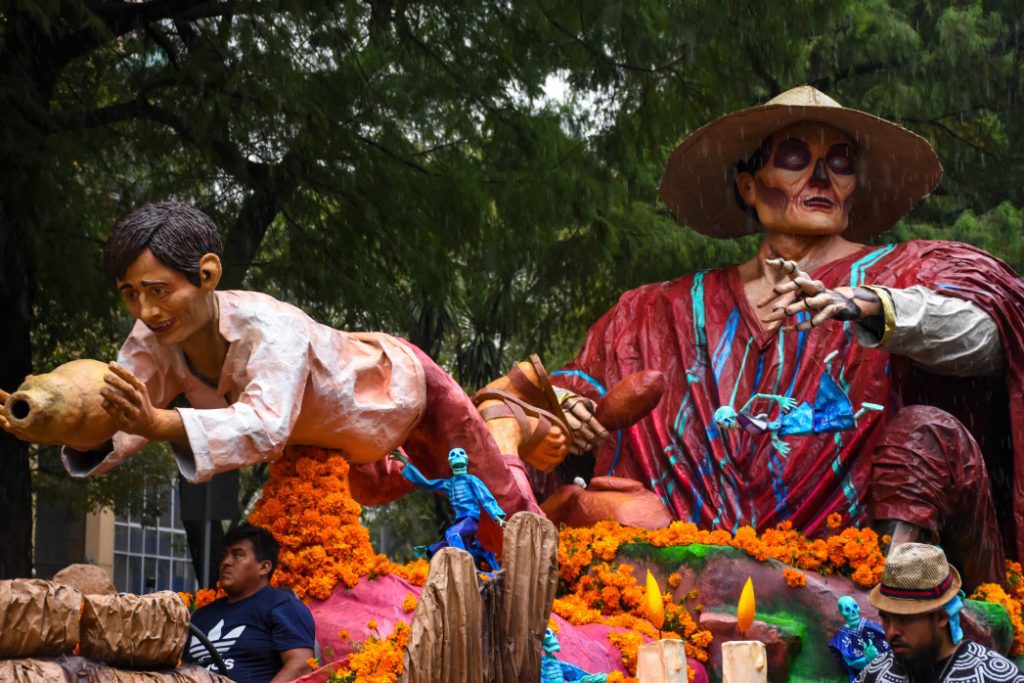
Oaxaca offers a less cosmopolitan but interesting interpretation of Day of the Dead flavored by the endurance of local indigenous cultures such as the Zapotecs and Mixtecs. Oaxaca is rife with celebrations that can be enjoyed in more intimate neighborhood festivities across the city. Visit Xochimilco, the oldest area of Oaxaca, to get away from the crowds and to enjoy a bit of the colonial history of the area. For something more modern, visit trendy Jalatlaco, where, among the street artists and restaurants, you might find a panaderías offering Pan de Muerto, the traditional sweet bread usually decorated with crossbones, but often in Oaxaca festooned with sugar skulls and sesame seed instead. No visit to the area would be complete without spending some time at Panteón de San Miguel, the largest graveyard in Oaxaca, where the scent of marigolds are said to guide the spirits to decorated gravesites where live Mariachi bands play late into the night.
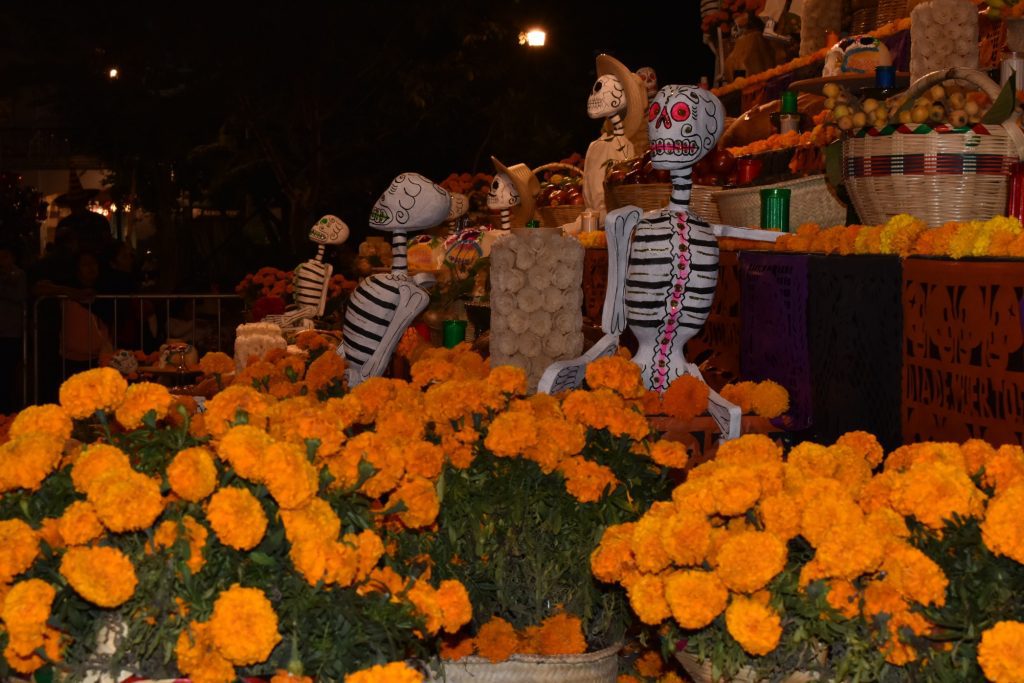
Janitzio is one of the smallest notable celebrations but also one of the most beautiful. The small island, situated on Lake Pátzcuaro in Michoacán, attracts thousands of visitors to the local cemetery to watch the indigenous Purepecha perform their rituals. One of the most striking traditions of the region comes at night when local fishermen row their boats into the lake and illuminate the dark with lit torches.
Wherever you decide to experience Dia de Los Muertos, respectfully join the celebrations. Don’t be afraid to get your face painted as La Catrina, the skeletal woman painted by Jose Guadalupe Posada in 1910 and was popularized by Mexican artist Diego Rivera, who painted her in Victorian dress. Walk among the monarch butterflies that flock to the area and are believed to carry the souls of the departed. Or follow a Xoloitzcuintli, the popular Mexican hairless dogs thought to be spiritual guides, who might lead you to the soul you seek.
—Ivan Young is a writer from Happy Writers, Co. in partnership with designer silverware wholesaler, Silver Superstore.




